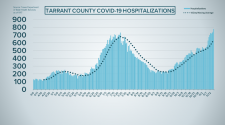Nellwyn Thomas cut her chops in campaign technology as the Deputy Chief of Analytics for Hillary Clinton’s campaign in 2016. Outside politics, she’s had her foot in Big Tech, working on business intelligence and data science for both Etsy and Facebook before becoming the Chief Technology Officer of the Democratic National Committee in May 2019.
The Democrats were the first party to bring big data to politics, but they came under serious criticism for a crumbling technology stack that may have contributed to Clinton’s 2016 loss. Thomas will be under extreme scrutiny in the coming weeks and in the subsequent election post-mortems.
Attempts to return to parity with Republicans seems to be paying off. On Wednesday, FEC filings show the Biden campaign holding a serious cash advantage on the Trump campaign which can be attributed, in part, to improved technology. Combined with a new system for sharing information on voters, called the Democratic Data Exchange, Democrats are able to track who has already voted and stop reaching out to those people, saving the Biden campaign money at crunch time.
We sat down with Thomas last week to chat about her strategy, her team, her plans for the future, and what she’ll be doing come November 4th.
This conversation has been edited for clarity,
Q: What does it mean to be the CTO of the DNC?
A: So day to day, it’s a phenomenal job. I love being able to work for the mission and values of all Democrats and feeling like the work I’m doing is not just going to be torn down, that it’s not just going to one candidate, but it’s going to candidates across the country, that it’s helping mayors win races in small towns and it’s helping the wider team.
Q: What does your day-to-day look like right now?
A: Right now, we’re locked down into security and load testing. And we have three main systems that we’re really laser focused on. One is processing all the data around early voting and absentee voting that comes in from all the states to make sure that campaigns are getting accurate information about who has already voted so they can drop those people out of their contacting universes as well as get that information into strategy.
The second is ivote.com, which is the main voter education and voter action center across the Democratic ecosystem. We built that and we maintain it. We deal with getting a million visitors after a debate, when flywillvote.com starts trending on Twitter, which might’ve happened last weekend.
And then we have another sub-system that’s used really heavily around the election, which is a voter protection software called LBJ. That’s used to track incidents of voter suppression and action against them.
Q: How many people work on your team? What’s the structure?
A: My team right now is around 65 across four main groups. We have a product development team, which is your product managers, engineers, data scientists, and data analysts that work on our tooling and infrastructure. We have a security team that focuses on the security of our systems and educating others. We have a disinformation team that focuses on monitoring, detecting and combating misinformation. And then we have a really phenomenal community team, which is basically the customer service for all of our users. By and large, we’re not the ones defining voter contact strategy, we’re providing these tools and resources, so it’s a very busy time for us.
Q: What is the larger data strategy for the Democrats? How have changes made in this election cycle contributed to the long-term plan?
A: In 2008 and then in 2012, you saw huge innovation in the use of data and technology. But then what happened in between 2012 and 2016 was the atrophy of a lot of that work because the DNC was not invested and there was no continuity in terms of maintaining or operating systems. And so by 2016, we were using a data warehouse that was basically on its last legs and barely functional. That was indicative, I think, of the general investment in data and technology. There’s a lot of things that happen behind-the-scenes that are not sexy but really important, like maintaining regular updates to the voter files, cleaning the data and data quality work. And that debt accrues for security reasons, access reasons, and all of these other ways.
Tom Perez had made one of his four key platform principles continuous investment in data and technology infrastructure, and we’ve been working on that since 2017. We upgraded the data warehouse, we transferred it to Google Cloud Platform, made huge investments in data quality behind-the-scenes and did things like acquiring 65 million cell phone [numbers] in 2020 (and 40 or 50 million more in 2018 and 2019), better record linkage and all sorts of enhancements. So when the Biden team came in, [they] could just roll right into a really solid foundation; and not just the Biden team, but all of those down ballots that are using our same resources.
Q: Do you feel like there’s a difference in ethics between how Democrats and Republicans run their technology stacks?
A: I think we’ve seen many unethical practices from the Republicans around how they’re leveraging information and how they’re targeting voters with specifically false or inaccurate information. That is not directly connected to how they architecture their data stack per se, so I wouldn’t want to say that. From what I can see, which is how they actually deploy the resources they’re gathering—their messaging, their voter targeting, their use of social media—I find it deeply worrisome that they’re really continuing to undermine democratic norms and practices through how they are talking to voters. [Republican operatives have been accused of using data to target and suppress the votes of Black and Hispanic voters, as well as spread disinformation]
Certainly, we believe really strongly that any data we have should be used to enfranchise people, to give more people information about how to vote, where to vote, when to vote, who to vote for, to be empowering to make the choice that they choose to make based on their own knowledge of the candidate and their preferences. It seems like through voter suppression and that seems highly unethical to me and undemocratic.
Q: A big challenge to campaigns is reinventing the wheel every two or four years. How is your team planning for longevity?
A: One of the biggest challenges is getting out of the cyclical gravity of the campaign cycle. You see a lot of innovation around presidential cycles in particular: you have a lot of money and time, and you can hire really talented people. There’s two forms of waste in this ecosystem. One is the waste of rebuilding every two years. The other is a waste of thousands of campaigns building the same thing. And so there has been a concerted effort to really counter the natural inclination to fund and defund. I think that there’ll be a really big test of that on the Democrat side after this election. My goal is to continue to lead the DNC tech team and have that stability, have that continuity, make sure that we can start looking ahead to 2022, 2024, and that we’ve reversed sort of the trend around spurts and stops.
And we can really, really start innovating on top of what is now a very solid foundation. I think the Exchange [the Democratic Data Exchange, the party’s clearing house for information that can be used by campaigns] is absolutely part of that vision. How do we have infrastructure that is not just ephemeral, that benefits from domain expertise and institutional knowledge? A lot of this is also cultural, right? Keeping talent in the ecosystem, keeping people who know the systems and ecosystems so that they can keep working on it. Like, no other tech company would fund and defund their team every two years. That would not be a way to run an effective long-term infrastructure platform.
The goal is to have a really strong platform where campaigns then come in and innovate and iterate and be like little experiment labs. So they can go to the really important stuff which is how do you innovate on how you’re talking to voters and how you’re effectively mobilizing and persuading voters not like how are you cleaning latitude and longitude data.
What do you and your team do on November 4th?
A: I will be checking myself into a hospital to have a baby – so that’s what I’ll be doing. [Thomas is heavily pregnant] My goal is for the team to be able to focus on two things or three things. One is they need to rest. We will probably be very focused on supporting any recounts for any election, big or small, and then off-boarding and asset transfers. We’ll be making sure that we are helping campaigns shut down, the Biden campaign in particular, capturing all that good data, and that we’re documenting everything. And then we’re going to start planning for 2022 and 2024. We have vision planning sessions mapped out once we have a little bit more brain power and brain space to think beyond the immediate election and think about what we want to be building for two, four, ten years from now.















